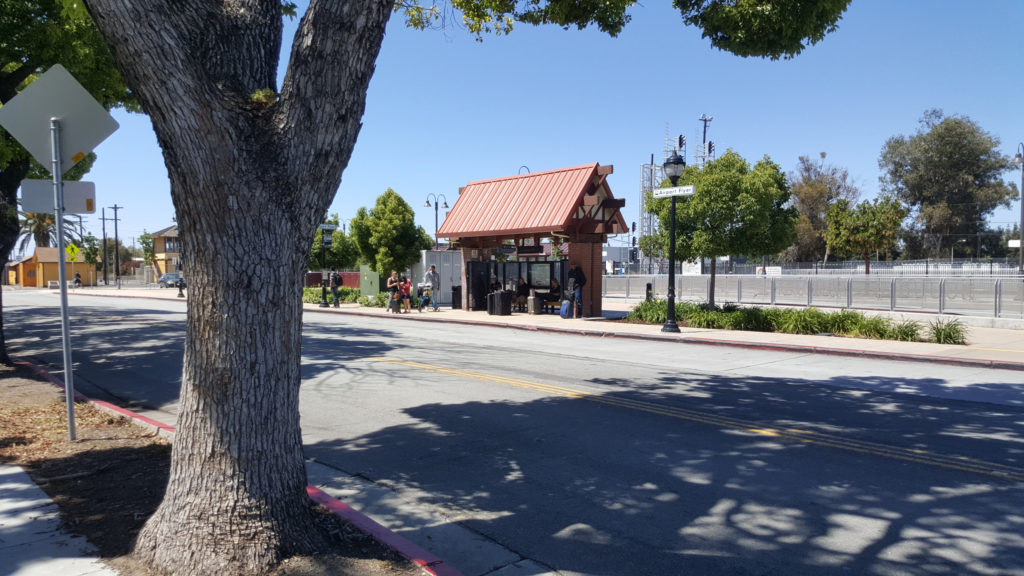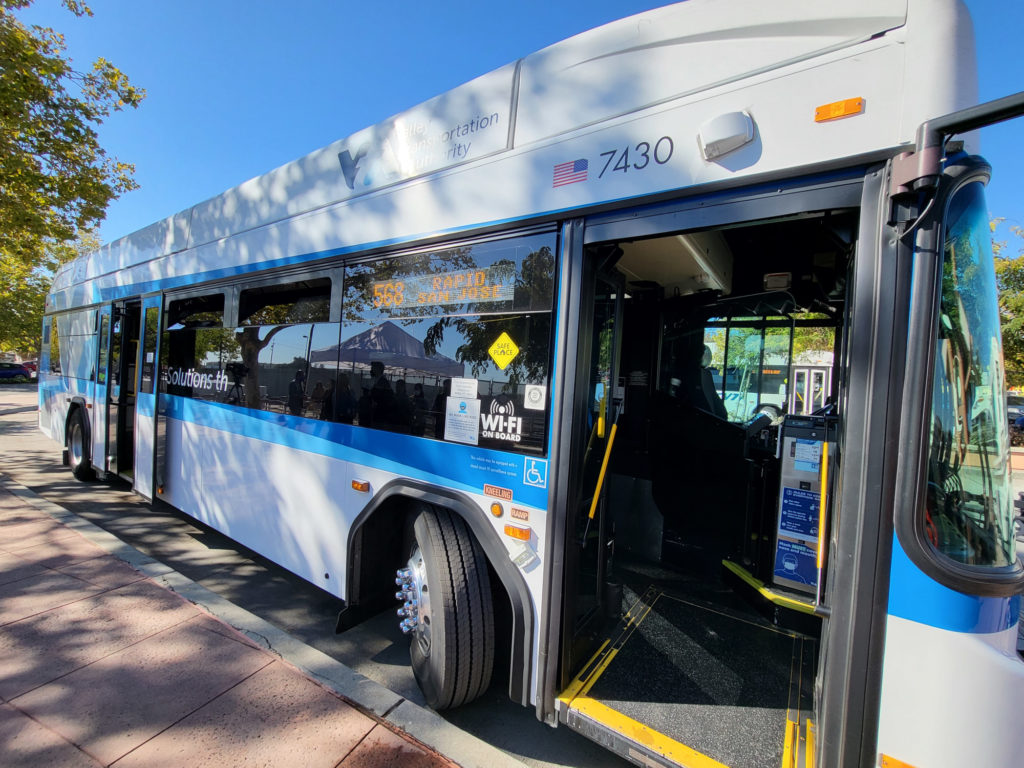
September 6 featured record high temperatures in Santa Clara County. One result of this, we learned, was that the Santa Clara Valley Transportation Authority (VTA) had to take 40 buses out of service that day. This was covered in the Mercury News (via East Bay Times) and CBS Bay Area.
Below highlights what was learned directly from VTA on what else happened that hot dayIt’s deeper than what has been reported in the press on this matter. Read and learn for more details.
Background
We first learned what was going on via notices of cancellations of VTA bus trips on lines like the 60 that serves Mineta San Jose International Airport…
We later learned what was truly going on thru VTA’s Twitter account the next day…
This in addition to how the extreme heat on September 6 and the rest of that week affected service on Caltrain and BART.
As For VTA…
On behalf of our group, I wrote a letter to Brandi Childress, Chief of Staff for VTA General Manager & CEO Carolyn Gonot, regarding what happened on September 6. Figuring that older buses are more likely to break down in this extreme heat, I asked how many buses were taken out of service in what year were they delivered.
On September 13, I got my answer from Ms. Childress and VTA staff. Note that VTA is currently looking for a new Chief Operating Officer at this time; hence, Ms. Childress is performing these duties in the interim.
How VTA Responded
Here’s what Brandi Childress replied about what really happened with some VTA buses having cooling problems on September 6:
It turns out that not all of the buses experiencing AC issues were pulled from service. In many cases, Operators decided they could continue their route which was largely the determining factor (length and area of the route) and not the bus model year. Our Chaboya Bus Division experienced most of the AC problems because those buses serve mid and south county routes (longer hauls). The AC units are designed to bring down the interior temperature by 25 degrees below ambient, even with doors opening frequently to let passengers on and off. On 100-degree days, that means inside bus temperatures are a comfortable mid-70. On 110- degree days, it becomes more uncomfortable and those buses were pulled from service. When they came back to the yard, most of the AC units were not in need of repair but still could not keep our Operators and passengers comfortable enough to continue.
My letter also inquired about how often cooling and heating systems (AC) are inspected on VTA buses. Here’s Brandi Childress’ response:
Air conditioning systems are thoroughly checked in the Spring and verified that they are working correctly every 6,000 miles throughout the summer and early fall. The same is done every 6,000 miles with the heating system during the winter months. In addition, should an Operator notify maintenance that the systems may not be working correctly, systems are checked and fixed when necessary.
Finally, I got a breakdown by garage and model (delivery year) on where the most VTA bus cancellations on January 6 occurred.
Breaking It Down Some More…

Of the 50 buses VTA pulled from service September 6, 35 of those buses were serviced at the Chaboya bus garage in South San Jose. The rest were split between the Cerone bus garage in North San Jose, and North bus garage in Mountain View.
Of those 35 buses from Chaboya bus garage, 19 of those buses were the 6400-series and 7400-series Gillig Low-Floor Plus buses delivered to VTA in 2016 and 2017, respectively. Recall from reading Brandi Childress’ reply she mentioned that the buses pulled from service primarily serve mid-county and South County. This is summarized in the table below.
Chaboya Garage (South San Jose) buses pulled Sept. 6
| Series number and year delivered to VTA | # of buses pulled |
| 1000-series low-floor diesel buses (2001) | 7 |
| 2000-series low-floor diesel buses (2002) | 5 |
| 0100-series low-floor hybrid buses (2010) | 2 |
| 4200-series & 4400-series low-floor hybrid buses (2014) | 2 |
| 6200-series & 6400-series low-floor hybrid buses (2016) | 4 |
| 7400-series low-floor hybrid buses (2017) | 15 |
All buses listed above are manufactured for VTA by Gillig Corporation of Livermore, CA.
What The Public Saw Sept. 6
For the transit-riding public on the record hot day of September 6, wait times of 30 minutes or longer for VTA buses were not uncommon. This was because buses were pulled from service; thus becoming unable to serve scheduled trips.
Based on approximate data obtained from pantographapp.com for September 6, VTA pulled these buses from service primarily between 1pm (13) and 7pm (19) – when the extreme heat was at its worst. This is detailed further in the chart below.
Per the chart, likely due to the extreme heat and pulled buses September 6, there were 34 missed trips on the 500 Rapid bus line alone that day. That number was the most missed trips for a bus line on the entire VTA bus network that day. The extreme heat and pulled buses primarily affected VTA bus routes running thru downtown San Jose and East San Jose to South San Jose, West San Jose, Gilroy, and Milpitas BART station. For instance:
- 22 missed trips on the 72 bus line
- 19 missed trips on the 73 bus line
- 14 missed trips on the 25 and 77 bus lines
- 13 missed trips on the 68 bus line
- 10 missed trips on the 26, 60, and 70 bus lines
Details on missed trips on other VTA bus lines September 6 are in the chart above.
Following Up
I’ve sent a follow-up letter to Ms. Childress and VTA staff asking them about the brand of HVAC used on VTA buses – particularly the newer buses. I will also do some research on transit agencies in other historical “hot weather” areas like Las Vegas, Los Angeles, Phoenix, and Alburqueque, NM, to see how their buses handle extreme heat.
Conclusion
The extreme, unprecedented record heat of September 6 also affected service BART and Caltrain in addition to VTA. Therefore, it’s hard to fault transit agencies for being unable to provide proper service when equipment is not available due to weather conditions. What can be done, with your help: ensure they are better prepared for extreme heat (or cold) in the future. Also, let’s work together to ensure VTA better communicates to riders what is going on when delays or cancellations occur. That will be done in a separate letter to VTA. Stay tuned.
Based on your experience, how well did you feel VTA handled the extreme heat on September 6? How, in your feeling, could they have done better? What are YOU willing to do to help VTA serve you better and communicate with you better during delays or cancellations? Please discuss and suggest politely in comments.
Eugene Bradley
Founder & CEO, Silicon Valley Transit Users
Coming up: an article on how several cities in Santa Clara County are rolling out “micro” transit.